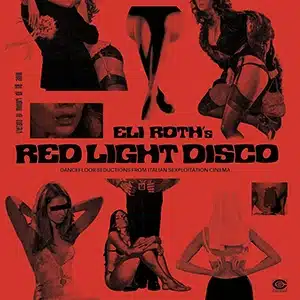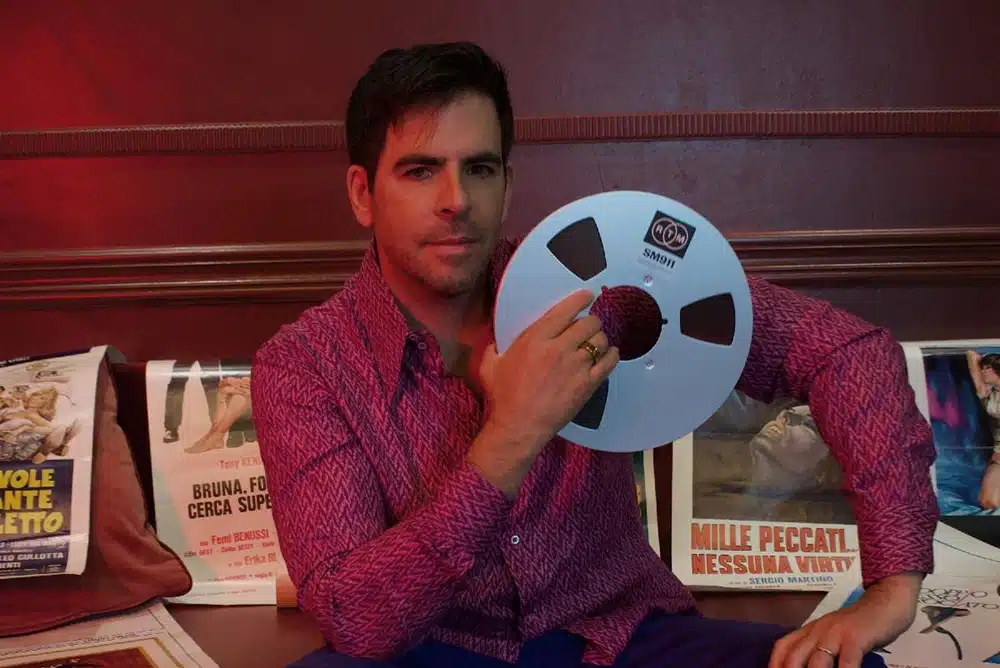
Vinyl has made a comeback, but the mores of record collecting have evolved. For example, it wasn’t long ago that DJs, committed to safeguarding the precious sonic treasures discovered through hours of crate-digging, defaced the center labels on their own records. Masking tape, pen scribbles, and even bleach were used to prevent other tastemakers from searching out the rare cuts that make for a memorable mix.
However, these acts of secrecy have diminished over the past decade or so. In a time when streaming services like Spotify operate blatantly unfair royalty payment schemes, it’s understandable why record collectors and DJ communities seem to have shifted towards a more open and cooperative attitude when it comes to sharing music. It’s getting harder to see the point in contending for clout against a hobbyist with a passion for stockpiling near-mint Turkish psych-rock LPs. Meanwhile, Spotify funnel their profits to major labels and pays a pittance to independent artists.
One result of this shift is the rising popularity of the compilation. An increase in vinyl record sales hasn’t necessarily given us more compulsive collectors willing to spend their afternoons thumbing through dusty dollar bins. It has, however, enabled a new wave of open-minded music fans. With seemingly limitless options for entertainment, more people are drawn to the compilation format for its economy. A compilation serves as both an exciting introduction and a crash course, an opportunity to immerse yourself in a sonic world for a short span of time before moving on to the next one.
For this reason, modern listeners tend to appreciate well-curated and beautifully packaged collections of exotic, hard-to-find records pressed on vibrantly colored vinyl. Eli Roth’s Red Light Disco: Dancefloor Seductions From Italian Sexploitation Cinema meets all the criteria.
Eli Roth is best known as the writer and director of a gratuitously violent horror film in which American backpackers in Slovakia are tortured in creative ways. In his “Editor’s Letter” from the booklet included with the compilation, he reveals his long-time love for the “Italian sexy comedy” films of the 1970s. With titles like L’Erotomane, Eros Perversion, and La Liceale Seduce I Professori, these schlocky, softcore films were created for lowbrow laughs. Roth acknowledges this while arguing for their endearing qualities and their significance in the history of Italian cinema, critics be damned.
“What these films definitely do have,” Roth writes, “almost by accident in some cases, is an excess of style. They serve as a record of the cars, the clothes, the hair, makeup, and the lifestyle of the time.” Also, of course, the music. For decades, the songs on this compilation were nearly impossible to find. Aside from hardcore crate diggers and film buffs like Roth, it’s safe to say few were looking, despite the box-office success of the movies in which they were featured.
CAM Sugar, a label committed to archiving and rereleasing Italian film scores, awarded Roth access to their catalogue. The result is a collection of 20 songs and a booklet featuring film posters, interviews with two actors and one composer, film set photographs, and cutouts from Italian newspaper adverts and articles. Eli Roth’s Red Light Disco is a unique listening experience and a peek into a bygone industry. It’s also typical of the current compilation trend: niche music painstakingly curated and contextualized by a zealous fan and marketed to an audience of adventurous listeners.
Disco is the primary flavor. The collection opens with “Sparklin’ Conversation”, a quaint exercise in synth-spangled disco attributed to Alfonso Zenga and Paolo Gatti. A vocoderized voice gurgles up from beneath a funky bassline and dances alongside a trumpet. The combination rarely gels and never resolves, providing two distinct and often discordant melodies that vie for the listener’s attention.
The vocoder lands harshly in the ear. Its likeness to the human voice, specifically the sound of someone in agony, is uncanny. The volume wavers up and down, and in a manner that feels haphazard. The notes blend with the trumpet before recoiling. There’s a sense of playfulness here that’s typical of the most interesting library and soundtrack recordings from this period, often the result of experimentation and the workmanlike haste required to churn out these records.
Many of these songs satisfy in similar fashion, though each is unique. Gianni Ferrio’s “La Musica È” features an almost comedically prominent triangle/cowbell combination and boasts the hookiest chorus in the collection. The pianist on Franco Campanino’s “Avere Vent’anni (Disco)” meanders over synths so bright and cheerful they register as utopian. Giuseppe De Luca’s “Studio Z” fuses a killer funk breakdown with organ, electric guitar, and a vocal that consists of strictly whooping and scatting. It’s loose, unhinged, and hilarious. Not at all sexy.
The title promises “dancefloor seductions”, and the booklet supplies sex scene stills and nude photographs. That said, few of the songs are obliquely sexual, let alone sexy. There are a few exceptions. In “Sexy Night” by Nico Fidenco, a male vocalist whispers close to the microphone while a female vocalist moans in a call-and-response style. The lyrics are sung in English, and the pronunciation is endearingly shaky in the manner of someone stumbling confidently through his non-native tongue. “She is the lady of a sexy night,” he whispers on the chorus, a dripping parody of male lust. If the song wasn’t direct inspiration for the vocals Michael Patton and Jennifer Charles contributed to Music to Make Love to Your Old Lady By, it’s a spiritual predecessor.
For the hip-hop heads, it’s worth noting that this compilation boasts a few first-rate funk instrumentals. Riz Ortolani’s “L’erotomane (Beat)”, a muscular downtempo strut with a full-bodied bassline, is begging to be chopped into rap-worthy chunks using an SP404. Stelvio Cipriani’s “Nude Odeon (Ritmico Funk)” would blend seamlessly into a mix built for a b-boy battle. Another of Cipriani’s instrumentals, “Il sesso del diavolo (Finale)”, opens with an intensely compressed breakbeat. The snare pops in the left channel with a force that could cause pain to eardrums positioned too close to an overly loud speaker box.
The booklet provides some historical context for English-speaking audiences unfamiliar with this niche of the world of Italian film scores. That said, it isn’t necessary to enjoy the music, and it doesn’t do much to enhance the listening experience. It’s worth flipping through, but it’s hard to imagine many listeners returning to the material.
Releases like this one rescue the laudable works of underappreciated musicians from obscurity. They also help broaden the aural palates of listeners who likely would never have discovered these records otherwise. That this compilation exists at all is a testament to the already wide-ranging listening habits of current consumers. The internet has made us all curators.
There’s hope in knowing that a generation of listeners can readily enjoy a compilation of Italian softcore film music from the 1970s, New Jersey soul singles from the 1970s, and synthpop from Soviet Central Asia in the 1980s. It’s easier than ever to indulge in wildly different worlds of sound and begin to understand the values and circumstances of the unique subcultures that created the music. That bodes well for the future of music consumption, discussion, and creation. Viva la compilation!

